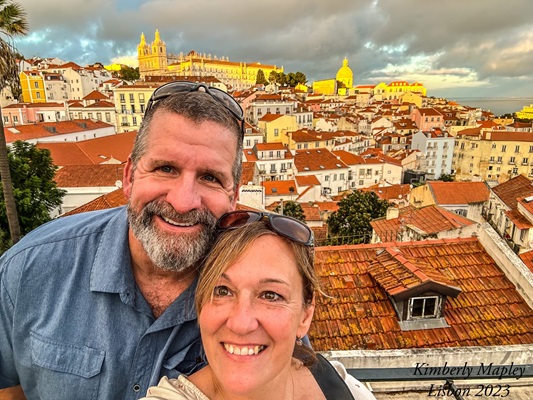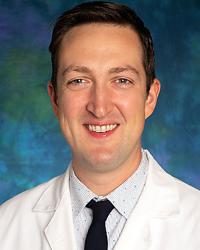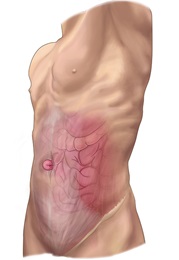Patient Story
Hernia Repair: Michael’s Story

Patient Story Highlights
- Michael Mapley’s abdominal hernia was 15 centimeters long and 7 centimeters wide.
- Hernias that large often require open surgery and hospital stays of five to seven days.
- Johns Hopkins surgeon Andrew Jung was able to perform a minimally invasive robotic procedure requiring six small incisions.
- Mapley stayed in the hospital just two days and is back to his active life in rural Maine.
Retired police officer Michael Mapley, 57, is back to boating, painting houses and helping out his neighbors in the tiny Maine town of Portage Lake after a minimally invasive robotic surgery at Sibley Memorial Hospital repaired his hernia.
Surgeon Andrew Jung, M.D., an expert in minimally invasive surgery, performed the operation in March 2023.
Jung says repairs for large hernias like Michael’s often require open surgery and postoperative hospital stays of five to seven days; his experience and training allowed him to perform a robotic procedure requiring six small incisions, which helped reduce Michael’s recovery time and his hospital stay to just two days.
“With the addition of the robot and the techniques it allows, we can cut the length of stay to one or two days,” Jung says. “And the recovery is smoother and less painful.”
While smaller hernias can usually be repaired with stitches and sometimes mesh, larger ones often require a more complex procedure known as component separation, which calls for cutting and releasing the muscle and fascia from the abdominal wall in order to create the slack necessary to close the hernia.
Jung, who says about 90% of his hernia operations are robotic, completed a fellowship in minimally invasive and robotic surgery and joined Johns Hopkins in 2022, bringing his expertise to Sibley as it was acquiring a second robotic surgical device. “These complex procedures require additional training,” he notes.
A Large Abdominal Hernia and a Second Opinion
Michael’s abdominal hernia, 15 centimeters long and 7 centimeters wide, developed following emergency surgery in Bangor, Maine, a year earlier for a twisted intestine. His staples were removed during a follow-up visit, and everything seemed fine during the three-hour drive back to Portage Lake.
Then Michael sneezed.
The incision split open “and I was holding my guts in my hands,” he says.
A second surgery put Michael’s intestines back inside him, but within a few months, as doctors had warned might happen, he developed a hernia along the scar. It was uncomfortable and made him nervous about lifting things and moving too abruptly.
A local surgeon told him he might need three operations to repair the damage, so Michael sought a second opinion at Sibley Memorial Hospital, where his wife, Kim, had successful back surgery to alleviate sciatica a couple of years earlier.
A Robotic Repair
“I met with Dr. Jung and liked him right off the bat,” says Michael, who moved from New York to Maine about five years ago and has a son in Washington, D.C.
Michael was a good candidate for the procedure because he is healthy and fit, says Jung. The minimally invasive surgery calls for six incisions, three on each side along the torso. They’re each about 8 millimeters wide, allowing the surgeon to insert two robotic arms with graspers and one equipped with a camera that gives a high-definition 3D view inside the abdomen.
“It's a lot like an open operation, but through tiny incisions,” explains Jung. “We insert the instruments and I sit at a console in the room and use my hands to manipulate the instruments and do the surgery.”
Michael returned home and gradually began increasing his activity. “Dr. Jung calls every month,” he says. “I asked if I could go back to lifting weights, and he said to start light and add reps, and to stop if something doesn’t feel right.”
That was several months ago, and Michael, back in Maine, hasn’t slowed down since.
“The goal of the hernia operation and hernia care in general is to get people back to their normal functioning life,” says Jung.





